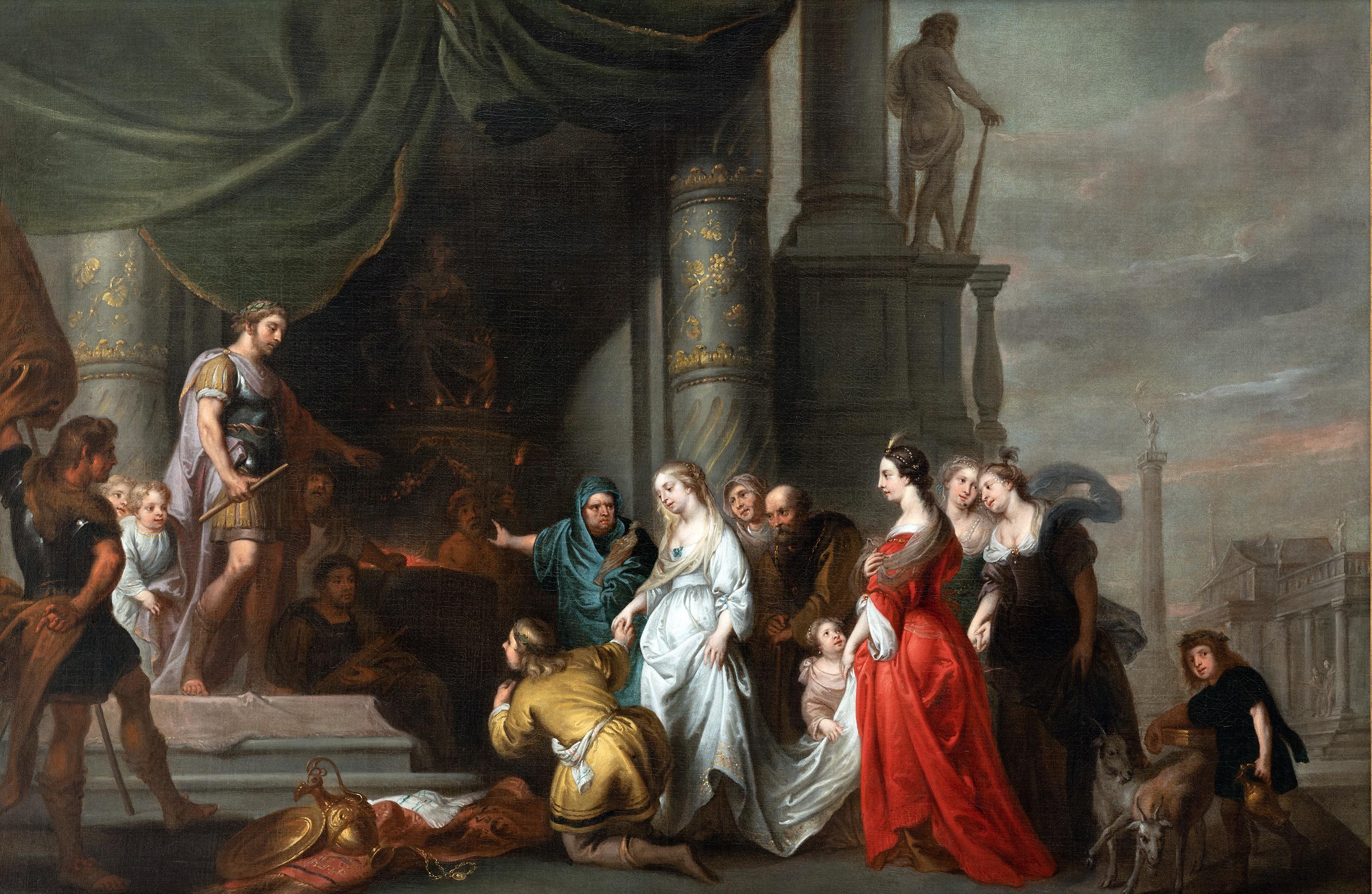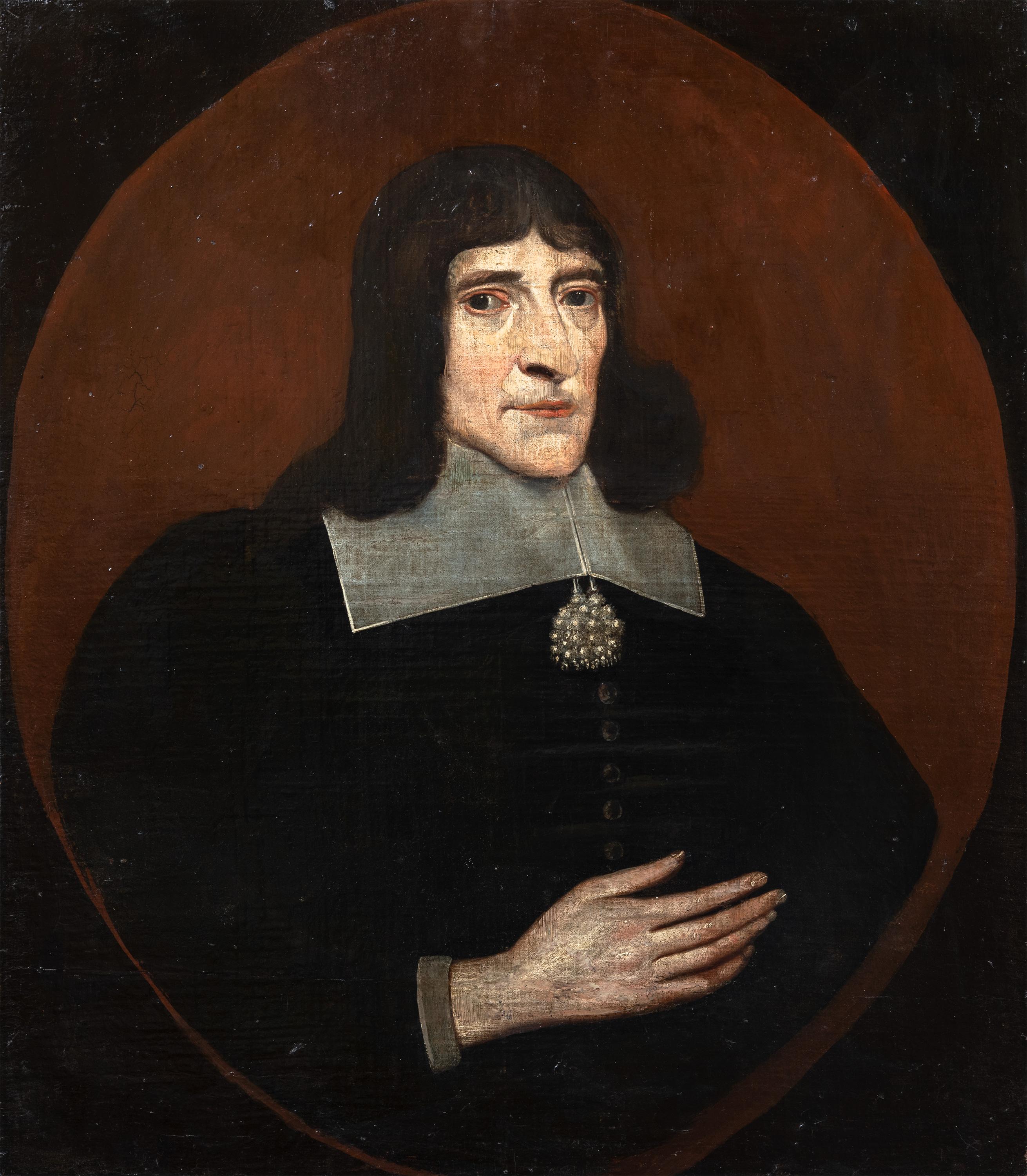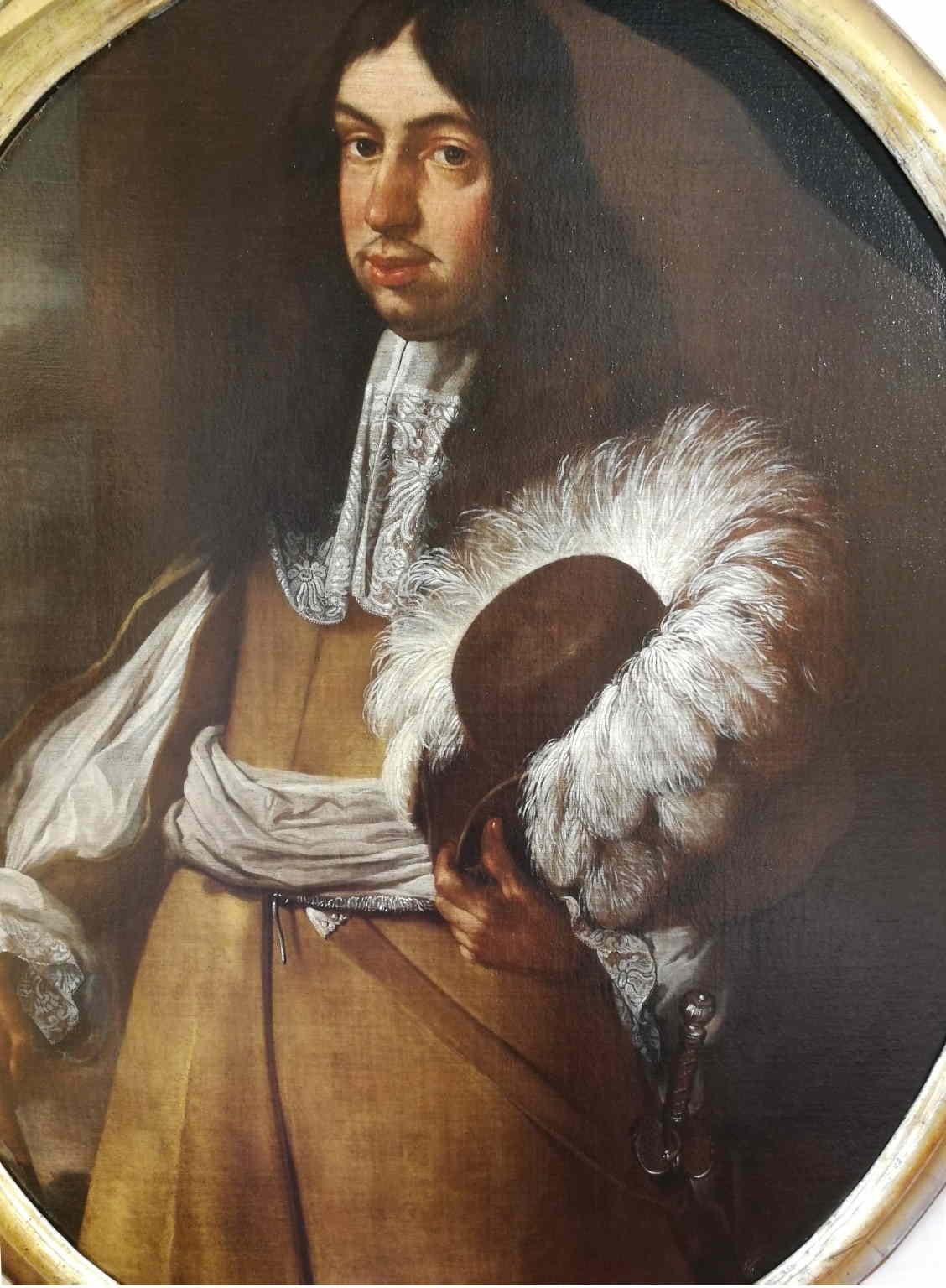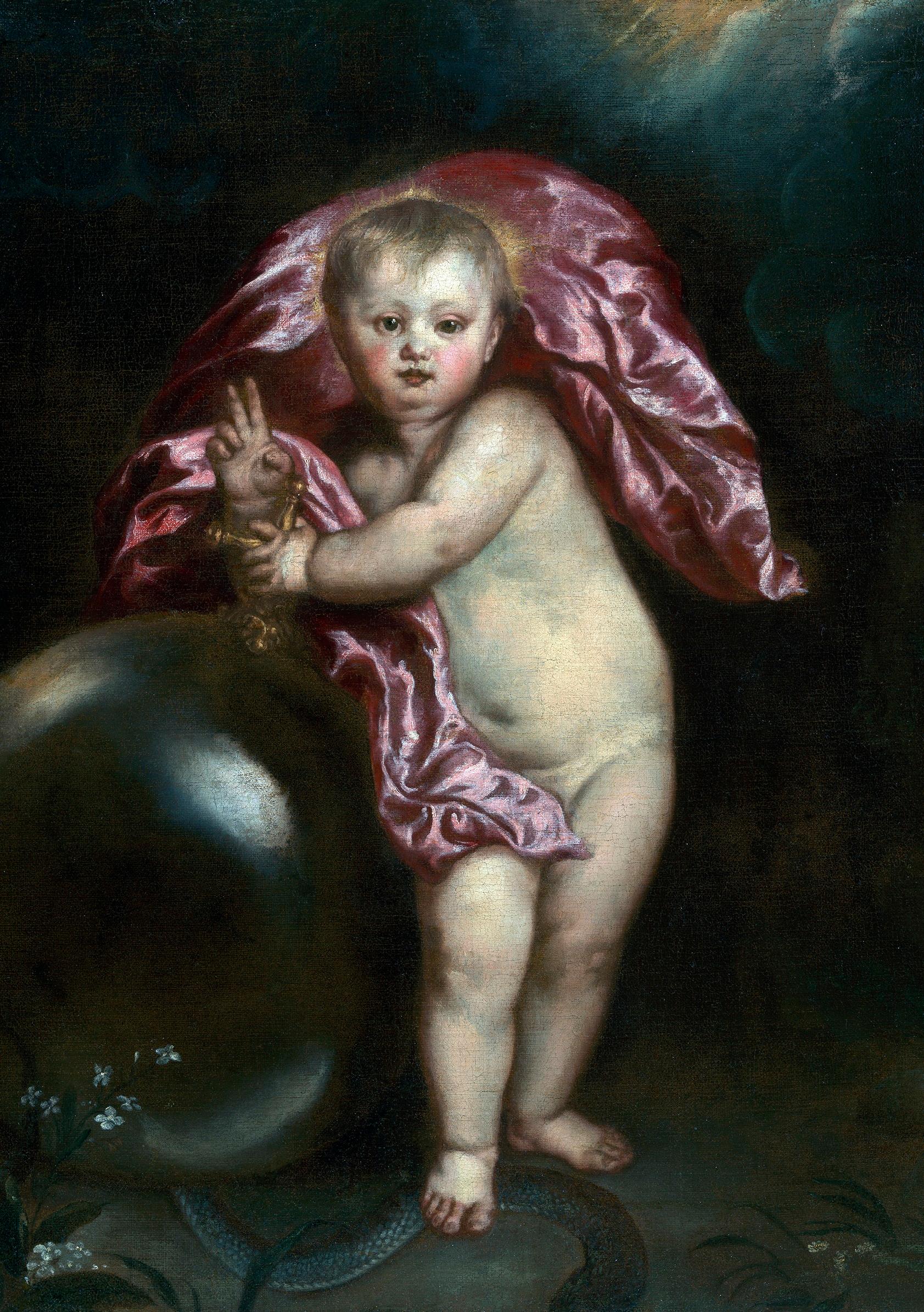Items Similar to Three Angels
Want more images or videos?
Request additional images or videos from the seller
1 of 6
Domenico Piola the ElderThree Angels
About the Item
Provenance:
Robert L. and Bertina Suida Manning, New York, until 1996
Private Collection, USA
One of the leading artists in Genoa during the second half of the seventeenth century, Domenico Piola came from a successful family of artists, renowned for their many illusionistic ceiling programs throughout Genoese churches and palaces. A prolific draughtsman and painter, Domenico oversaw an extremely productive studio. In addition to his collaborations with numerous other artists, Domenico also provided many designs for book illustrations and prints that circulated throughout Europe, earning him international exposure and high acclaim in his own day.
As Dr. Anna Orlando has indicated (written communication), the present work is an early work by Piola, datable from the late 1640s. At this time the young artist came strongly under the influence of Castiglione and Valerio Castello, while admiring the works of Giulio Cesare Procaccini. Piola’s works from this period are exuberant and fluid, and the artist’s love of portraying children is evident from the angels and putti that populate both his altarpieces and more intimate paintings.
The present work depicts three angels or putti, one hugging another, who holds an apple in his hand and whose hair is tied in a soft-blue bow. It is a charming work, as each of the children seems content, even joyous. A similar characterization of the figures is to be found in other paintings by Piola of this date—such as the heads illustrated below (Figs. 1-4).
- Creator:Domenico Piola the Elder (1627 - 1703, Italian)
- Dimensions:Height: 10.875 in (27.63 cm)Width: 14 in (35.56 cm)
- Medium:
- Movement & Style:
- Period:
- Condition:
- Gallery Location:New York, NY
- Reference Number:1stDibs: LU1025778331

About the Seller
5.0
Recognized Seller
These prestigious sellers are industry leaders and represent the highest echelon for item quality and design.
Established in 1997
1stDibs seller since 2012
17 sales on 1stDibs
Typical response time: 11 hours
- ShippingRetrieving quote...Ships From: New York, NY
- Return PolicyThis item cannot be returned.
More From This SellerView All
- Head of an AngelLocated in New York, NYProcaccini was born in Bologna, but his family moved to Milan when the artist was eleven years old. His artistic education was evidently familial— from his father Ercole and his elder brothers Camillo and Carlo Antonio, all painters—but his career began as a sculptor, and at an early age: his first known commission, a sculpted saint for the Duomo of Milan, came when he was only seventeen years old. Procaccini’s earliest documented painting, the Pietà for the Church of Santa Maria presso San Celso in Milan, was completed by 1604. By this time the artist had made the trip to Parma recorded by his biographers, where he studied Correggio, Mazzola Bedoli, and especially Parmigianino; reflections of their work are apparent throughout Procaccini's career. As Dr. Hugh Brigstocke has recently indicated, the present oil sketch is preparatory for the figure of the angel seen between the heads of the Virgin and St. Charles Borrommeo in Procaccini's altarpiece in the Church of Santa Afra in Brescia (ill. in Il Seicento Lombardo; Catalogo dei dipinti e delle sculture, exh. cat. Milan 1973, no. 98, pl. 113). As such it is the only known oil sketch of Procaccini's that can be directly connected with an extant altarpiece. The finished canvas, The Virgin and Child with Saints Charles Borrommeo and Latino with Angels, remains in the church for which it was painted; it is one of the most significant works of Procaccini's maturity and is generally dated after the artist's trip to Genoa in 1618. The Head of an Angel is an immediate study, no doubt taken from life, but one stylistically suffused with strong echoes of Correggio and Leonardo. Luigi Lanzi, writing of the completed altarpiece in 1796, specifically commented on Procaccini's indebtedness to Correggio (as well as the expressions of the angels) here: “Di Giulio Cesare...Category
17th Century Old Masters Figurative Paintings
MaterialsCanvas, Paper, Oil
- Madonna and Child with Angels in the CloudsLocated in New York, NYProvenance: Charles H. and Virginia Baldwin, Claremont, Colorado Springs, Colorado ca. 1907-1934; thence by descent until sold in 1949 to: Charles Blevins Davis, Claremont (renamed Trianon), Colorado Springs 1949 -until gifted in 1952 to: The Poor Sisters of Saint Francis, Trianon, Colorado Springs, 1952 until acquired, 1960, by: John W. Metzger, Trianon, renamed as the Trianon School of Fine Arts, Colorado Springs, 1960-1967; when transferred to: The Metzger Family Foundation, Trianon Art Museum, Denver, 1967 - 2004; thence by descent in the Metzger Family until 2015 Exhibited: Trianon Art Museum, Denver (until 2004) The present work is a spectacular jewel-like canvas by Amigoni, rich in delicate pastel colors, most likely a modello for an altarpiece either lost or never painted. In it the Madonna stands firmly upon a cloud in the heavens, her Child resting on a delicate veil further supported by a cloud, as he gently wraps his arm around his mother’s neck. From above angels prepare to lower flowers and a wreath, while other angels and seraphim surrounding the two joyfully cavort. Dr. Annalisa Scarpa, author of the forthcoming monograph on Jacopo Amigoni...Category
18th Century and Earlier Figurative Paintings
MaterialsCanvas, Oil
- St. Vincent Ferrer Preaching to the People of SalamancaLocated in New York, NYProvenance: Private Collection, New Jersey The present painting depicts Saint Vincent Ferrer preaching from a raised pulpit to a group of seven peopl...Category
15th Century and Earlier Renaissance Figurative Paintings
MaterialsOil, Wood Panel
- Portrait of a ManLocated in New York, NYProvenance: with Leo Blumenreich and Julius Böhler, Munich, 1924 Dr. Frederic Goldstein Oppenheimer (1881-1963), San Antonio, Texas; by whom given to: Abraham M. Adler, New York, un...Category
16th Century Old Masters Portrait Paintings
MaterialsOil, Panel
- Head of a Classical Poet (Socrates?)By Pier Francesco MolaLocated in New York, NYProvenance: Possibly Antonio Amici Moretti, Rome, 1690 Roy Clyde Gardner, Union, Mississippi, 1970s until 2004; by whom given to: Mississippi Band of Choctaw Indians, 2004-2010 Lit...Category
17th Century Baroque Paintings
MaterialsCanvas, Oil
- Portrait of a GentlemanBy Ippolito Scarsella (Scarsellino)Located in New York, NYProvenance: Suida-Manning Collection, New York Private Collection Exhibited: Venetian Paintings of the Sixteenth Century, Finch College Museum of Art, New York, October 30-December 15, 1963, no. 31. Veronese & His Studio in North American Collections, Birmingham Museum of Art, Oct. 1-Nov. 15, 1972, and Montgomery Museum of Fine Arts, Dec. 5-Dec. 31, 1972 Literature: Robert L. Manning, A Loan Exhibition of Venetian Paintings of the Sixteenth Century, exh. cat. New York 1963, cat. no. 31ill., as by Veronese Stephen Clayton and Edward Weeks, eds., introduction by David Rosand, Veronese & His Studio in North American Collections, Birmingham 1972, as by Veronese, p. 38 ill. Terisio Pignatti, Veronese, Venice 1976, I, p. 199, cat. no. A225, II, fig. 908, as attributed to Veronese Terisio Pignatti and Filippo Pedrocco, Veronese; catalogo completo dei dipinti, Florence 1991, no. 54°, as attributed to Veronese. Terisio Pignatti and Filippo Pedrocco, Veronese, Milan 1995, II, pp. 517-518ill., cat. no. A 56, under attributed paintings, by Veronese and workshop) John Garton, Grace and Grandeur; The Portraiture of Paolo Veronese, London-Turnhout 2008, p. 237, fig. 77, cat. no. R16, as workshop of Veronese. Scarsellino’s art is widely regarded as critical link between the Renaissance and the Baroque styles in Emilian painting; not only was he an important transmitter of the heritage of the Renaissance, but he was also open to innovative ideas, and was one of the earliest to experiment with the trend to naturalism that would become fundamental to art of the new century. Born around 1550, he received his earliest training from his father Sigismondo, an architect and painter; it was probably while working at his father’s side as a youth that he acquired the nickname Scarsellino, or “little Scarsella”. After absorbing the principles of his art in Ferrara and Parma, he went to Venice in 1570, staying for four years and working in the shop of Veronese. In the following decade, his art —especially in terms of its piety and its development of landscape— demonstrates a strong sympathy with that of the Carracci, with whom he worked in 1592-1593 at the Palazzo dei Diamanti in Ferrara. Maria Angela Novelli and later Alessandra Frabetti both propose that Scarsellino traveled to Rome, although such a trip has not been documented; if he did travel to Rome, it probably would have occurred during the years that Scarsellino’s colleagues Agostino and Annibale Carracci were there, that is, beginning in 1595 and until 1609. The last decades of Scarsellino’s career again involve stylistic experimentation, this time in a manner that would bring his work very close to the progressive figurative naturalism of Carlo Bononi and prepare the way for Guercino. The present portrait of a distinguished gentleman had been long thought to be by Paolo Veronese and was in fact attributed to him by such distinguished connoisseurs as Adolfo Venturi and Wilhelm Suida. The portrait’s style is, however, distinct from Veronese’s, although clearly indebted to it, and the attribution to the young Scarsellino is wholly convincing. The painting would then date from the 1570s – a date confirmed by the costume the subject wears. The puffed hat that appears in the painting had a rather short-lived vogue in the early 1570s. One sees it in Giambattista Moroni’s Portrait of Count...Category
18th Century and Earlier Baroque Portrait Paintings
MaterialsCanvas, Oil
You May Also Like
- Continence of Scipio, Erasmus Quellinus, School Rubens, Baroque Art, Old MasterBy Erasmus Quellinus the YoungerLocated in Greven, DEErasmus Quellinus The Continence of Scipio Oil on Canvas The painting is included in the Catalogue Raisonné of the artist. The Roman commande...Category
17th Century Baroque Figurative Paintings
MaterialsOil, Canvas
- 17th century English figure painting - Portrait nobleman - Oil on canvasLocated in Varmo, ITEnglish painter (17th century) - Portrait of a gentleman. 73.5 x 63.5cm. Oil on canvas, unframed. Condition report: Canvas applied on panel. Good state of conservation of the pict...Category
Mid-17th Century Baroque Portrait Paintings
MaterialsCanvas, Oil
- Study for a Man, Young man, Italian or Dutch School, 17th Century, Old MasterLocated in Greven, DEStudy for a Man, perhaps Italian School , Follower of Caracci. Old Master Painting. In a Golden Frame, 52 x 46 cm.Category
17th Century Baroque Figurative Paintings
MaterialsCanvas, Oil
- Portrait Of A Noblewoman. Attributed To Carlo Ceresa. About 1640.By Carlo CeresaLocated in Firenze, ITPortrait of a noblewoman. Attributed to Carlo Ceresa. (1609 - 1679, Bergamo) Oil on canvas. Size cm 110x86,5cm with frame Around 1640. This portrait depicts a middle-aged woman w...Category
Mid-17th Century Baroque Portrait Paintings
MaterialsOil, Canvas
- Attributed to Carlo Ceresa Portrait of a Gentleman 17 century oil canvasBy Carlo CeresaLocated in Florence, ITThe painting represents the portrait of a young gentleman from the late XVII century, stylishly and modish dressed. The figure is shown perfectly placed in space; the volume of the figure is depicted with great competence, so the body appears realistic and tangible. The Gentleman exhibits an extremely distinguished behavior, and reveals strength and energy together with a genuine liveliness that comes close to cordiality by showing a hint of a smile. This young man was undoubtedly a member of an aristocratic and rich family and he’s portrayed in the arcade of his city palace or maybe in his country villa. The artist who painted the Gentleman was a skilful and appreciated artist, sought-after by aristocratic and rich customers, which is demonstrated also by the refined pose of the portrayed and the attention to the details of his dress. One very fascinating peculiarity is in his costume indeed, distinguished by originality from the majority of that time’s dresses, which were almost always black or at least dark, according to the fashion which prevailed at that time in the Italian Region Lombardy. The painting is attributed to Carlo Ceresa, who was born and worked in that Region. The artist was also famous and appreciated for the meticulous attention to details of the cloth and the faithful and realistic rendition of the features, elements that we find in the Gentleman indeed. The young man wears a military costume, a short layered coat, made of leather or suede; this garment was used under the armor or alone because it was resistant enough to assimilate the strokes of the sword and it was long enough to protect the thighs up to the rim of the boot. Another Gentleman still unknown at the Stibbert Museum (Florence) shows a very similar garment and is dated by the scholars 1660 circa. The sober costume of the Gentleman was enriched by elegant details, such as the Venetian laces, the precious fabric and a hat with many soft feathers, very fashionable at that time and an element of distinction for their value, skillfully represented by the artist in the decorations and in the weave. The Gentleman gracefully holds a walking stick in his right hand; the hat indeed is carried in a charming way; all these signals increase the aristocratic posture of the figure. Besides, remarkable and inventive was the taste of the artiste in creating the harmony between the combination of the two predominant colors white and yellow, perfectly bound together with the dark color of the hat, the background and his hair, emphasizing, while accurately framing it, the face of the Gentleman. Furthermore, very meticulous is the face shading, the hue of the colors in order to render realistic the ruddiness, and the white touches are competently given on the nose and the lips in order to recreate the original brilliance. COMPARISONS BETWEEN THE GENTLEMAN AND CARLO CERESA’S ARTWORKS The Gentleman shows many style comparisons with a number of portraits...Category
Late 17th Century Baroque Portrait Paintings
MaterialsCanvas, Oil
- Christ as Salvator Mundi, Circle Van Dyck, Flemish Old Master, Christ ChildBy Anthony van DyckLocated in Greven, DEThe Christ Child as Redeemer of the World Oil on Canvas, 69.3 x 49.7 cm Provenance Private Collection, Belgium The present painting is known in different versions. One of them is ...Category
17th Century Baroque Figurative Paintings
MaterialsCanvas, Oil
Recently Viewed
View AllMore Ways To Browse
Baroque Bow
Antique Hair Bows
Angel Painting 17th Century
Putti Oil
Oil Painting Of Young Angel
Antique Communication
Baroque Painting Angel
Antique Childrens Book Illustrations
Putti Oil Painting
17th Century Hand Paint Print
Giulio Cesare
Hugging Man
Ceiling Hugger
Procaccini Giulio Cesare
Service By Night
California Post War Art
1930 Oil Painting Of A Woman
Miniature Paintings Modern




